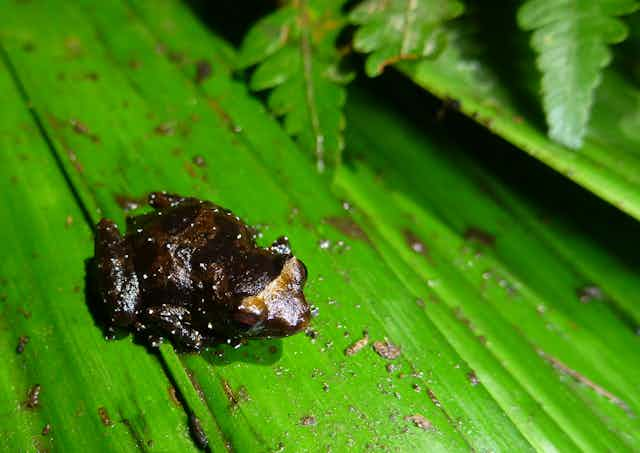
I have just returned from the jungles of Papua New Guinea, where for two weeks a team of us have set camera traps that will collect vital information about the biodiversity of this remote region. It’s all in the name of protecting some of the world’s rarest animals, including the Weimang and Tenkile tree kangaroos. But what’s it like working in the PNG jungles?
We were working in a remote region of PNG known as Yauoru. I knew the place was remote — most of PNG is — but I hadn’t appreciated just how remote.

Beginning our five day walk Jim Thomas from the Tenkile Conservation Alliance (TCA) turned to one of our support staff and asked if any white people had been here. The answer was no, never. Being allowed to visit such a special area was an immense privilege.
That five day walk was undoubtedly the hardest walk I’ve done, a genuine test of endurance. The first day we walked from Ningal to Uwei (villages close to Yauoru), where Samuel Kabau, a local Uwei villager and Tenkile Conservation Alliance staff member lives. Along the way we passed through cocoa plantations, lowland rainforest and made our first of many river crossings. This took a little over six hours. But that was just day one.
After leaving Uwei we began a long, long walk up the river Obin, crossing raging rapids, leaping over boulders and navigating narrow canyons. I gained an appreciation for the strength of local Papuans as compared to myself. While I plodded with waterlogged boots, drenched to the bone by tropical rains, the locals carried heavy gear and pulled me through rapids so I wasn’t swept away, all in bare feet. And all the time chewing betel nut and smoking cigarettes.

After five hours I got my hopes up that we were close to base camp, but I was sadly wrong. After leaving the river we walked and crawled up the side of a mountain at an angle exceeding 45 degrees. Again my local friends — weighing 50-55kg — stepped in to help lift and shove my 75kg frame up the slope.
We arrived at base camp where some of our team had gone ahead and built a hut and boiled a billy — which in this case was a bamboo stem. Eat your heart out coffee snobs, I’ve had coffee from a bamboo stem on top of a remote PNG mountain.

On day three Jim and I trekked to the top of the mountain to place cameras (the exact location is a secret). We put out 26 cameras, ranging from 1100m to around 1400m above sea level.
We’d planned for 36 and at a greater range of elevations, but technical issues (more commonly known as Murphy’s Law, prevented us. Below 1100m the mountain was too steep to stay upright!
Some of the cameras were baited with peanut butter, honey, and vanilla essence for animals who have a sweet tooth; that’s tree kangaroos. Others we baited with tuna oil for predators such as Salvadori’s Monitor, which reportedly can grow to greater than four metres. The locals describe it as a crocodile that climbs trees. Fortunately I didn’t encounter the monitor at night, but I hope our cameras do.

Now the waiting game begins. Our cameras are set to be retrieved in February next year. Animals are most likely walking past our cameras right this moment, but we’ll have to wait several months to find out just which ones. While helping to conserve endangered tree kangaroos, hopefully the project will show the positive effects of work by the Tenkile Conservation Alliance and the hunting-free zone the organisation has established in the Torricelli Mountains. It also demonstrates how vital local communities are for conservation. Without them, our expedition would have failed.
Read more about Euan’s Papua New Guinea expedition here, and stay tuned for more next year.

